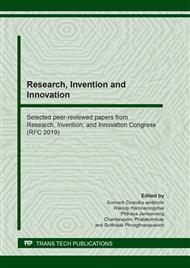p.143
p.152
p.160
p.169
p.175
p.182
p.190
p.198
p.205
Effect of Blank Holder Force and Edge Radius on Joining Strength in Flat-Clinching Process
Abstract:
A lightweight structure has been often mentioned in the automotive industry due to the increasing cost of energy as well as environmental legislation. Multi-material design is applied to reduce the weight of a car body. To join dissimilar sheet materials, it is quite difficult to achieve by welding processes. A flat-clinching process is one of the mechanical joining processes, which have join-ability of dissimilar sheet materials by plastic deformation. The purpose of this paper was to study the clinch-ability to join AA1100-to-AA1100 aluminum, AISI1010-to-AISI1010 steel, and AISI1010 steel-to-AA1100 aluminum sheets. Furthermore, the effect of both blank holder force (BHF) and edge radius (BHR) in the flat-clinching process on a joining strength was investigated. A shear strength test was conducted to examine the joining strength. The results show that the flat-clinching process can be successfully applied to join the similar sheet materials with the formation of interlocking. However, to achieve the joint of the dissimilar sheet materials, the AISI1010 steel sheet must be on the punch side. Also, both the BHF and the BHR significantly influent on the joining strength.
Info:
Periodical:
Pages:
175-181
Citation:
Online since:
August 2020
Authors:
Price:
Сopyright:
© 2020 Trans Tech Publications Ltd. All Rights Reserved
Share:
Citation:


